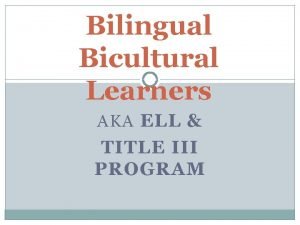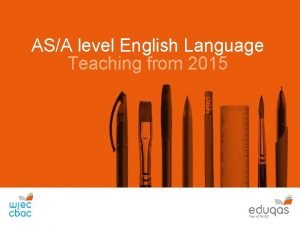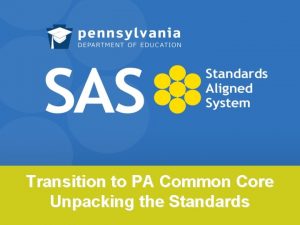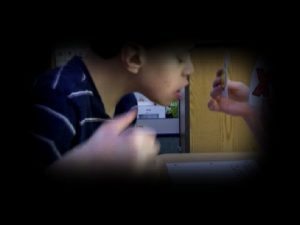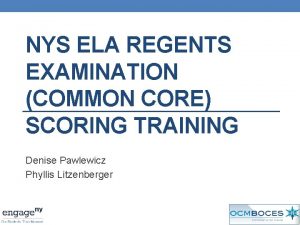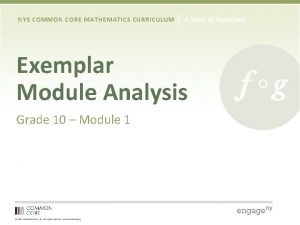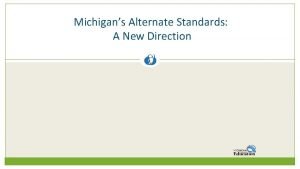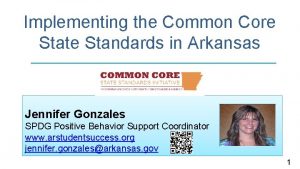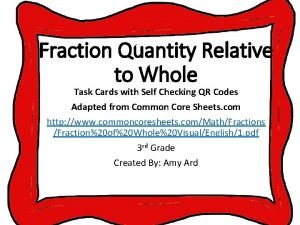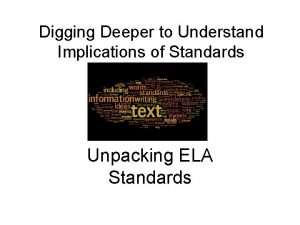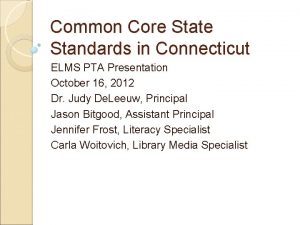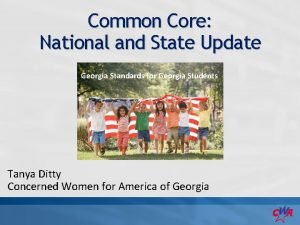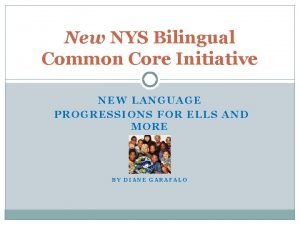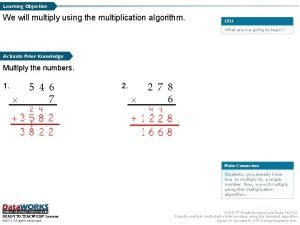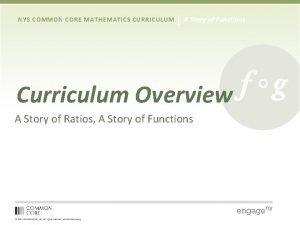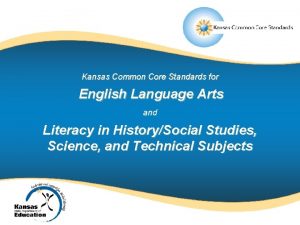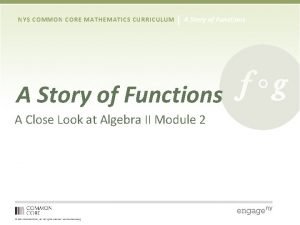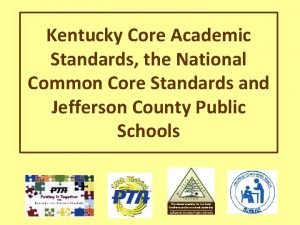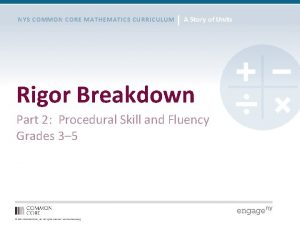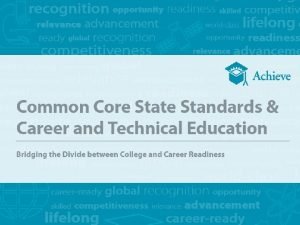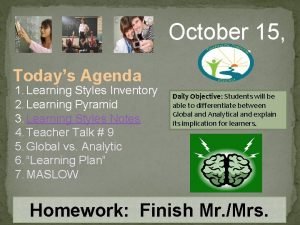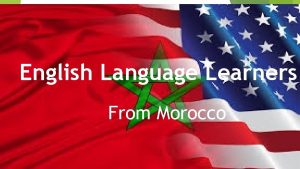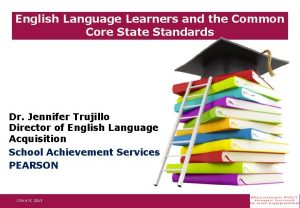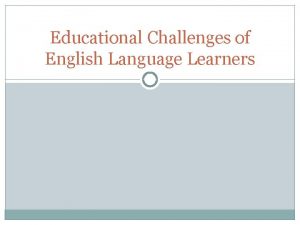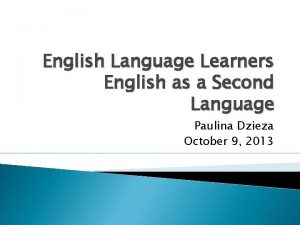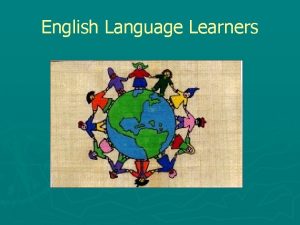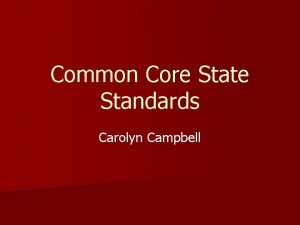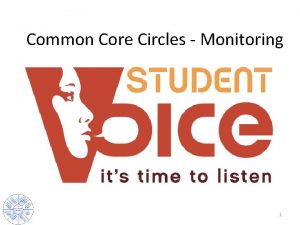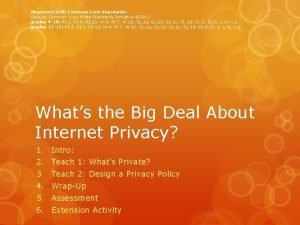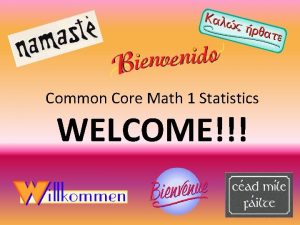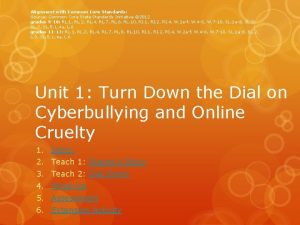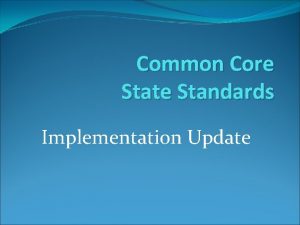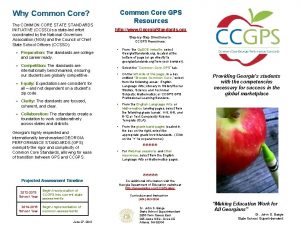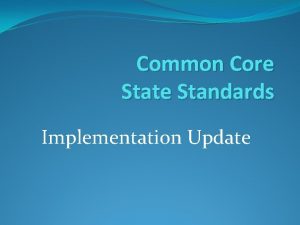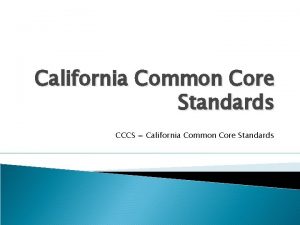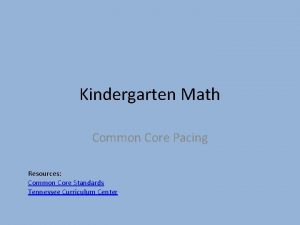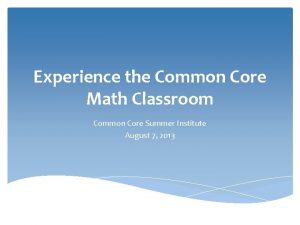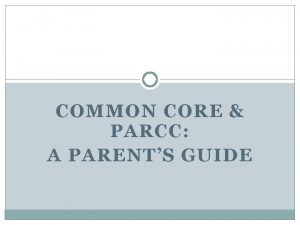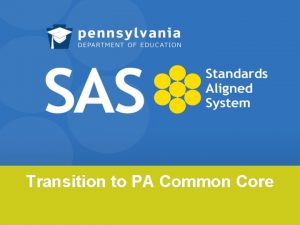The Common Core for English Language Learners Challenges


































- Slides: 34

The Common Core for English Language Learners: Challenges and Opportunities http: //ell. stanford. edu

Lau v. Nichols (1974) . . . There is no equality of treatment merely by providing students with the same facilities, textbooks, teachers and curriculum; for students who do not understand English are effectively foreclosed from any meaningful education. . .

A Nation at Risk (1983)… call for standards.

No Child Left Behind

No Child Left Behind: Three important pieces for ELLs Sec. 1111(a)(3)(ix)(III) the inclusion of limited English proficient students, who shall be assessed in a valid and reliable manner and provided reasonable accommodations on assessments administered … including, to the extent practicable, assessments in the language and form most likely to yield accurate data… Sec. 1111(a)(3)(xiii) enable results to be disaggregated within each State, local educational agency, and school by…English proficiency status. Sec 3113(b)(2) standards and objectives for raising the level of English proficiency that are derived from the four recognized domains of speaking, listening, reading, and writing, and that are aligned with achievement of the challenging State academic content and student academic achievement standards described in section 1111(b)(1).

Common Core State Standards

http: //www. nationalatlas. gov/mapmaker


Kenji Hakuta (Stanford University)

National Geographic: George Steinmetz

Un de rs ta nd in g La ng ua ge


The new standards afford us a fresh opportunity to reinforce the key findings of our knowledge and experience as the ELL field:

The new standards afford us a fresh opportunity to reinforce the key findings of our knowledge and experience as the ELL field: • with support, ELLs can participate in classroom discourse focused on rich and exciting academic content.

The new standards afford us a fresh opportunity to reinforce the key findings of our knowledge and experience as the ELL field: • with support, ELLs can participate in classroom discourse focused on rich and exciting academic content. • ESL is necessary but not sufficient; ELLs learn language best when they engage with content.

The new standards afford us a fresh opportunity to reinforce the key findings of our knowledge and experience as the ELL field: • with support, ELLs can participate in classroom discourse focused on rich and exciting academic content. • ESL is necessary but not sufficient; ELLs learn language best when they engage with content. • focusing on both text and discourse gives ELLs opportunities for extended engagement with complex ideas.

The New Standards… • raise the bar for learning; • raise the demand for language; • call for a high level of classroom discourse across all subject areas.

What do the New Standards Imply? Focus on Language • “Students can, without significant scaffolding, comprehend and evaluate complex texts across a range of types and disciplines and they can construct effective arguments and convey intricate and multifaceted information” (ELA student portraits, p. 7) • Mathematically proficient students understand use stated assumptions, definitions, and previously established results in constructing arguments. They make conjectures, and build a logical progression of statements to explore the truth of their conjectures” (Math practices, pp. 6 -7)

Science Practices’ focus on Language

Content Mostly vocabulary, Grammar Old Paradigm Language

New Paradigm Content Discourse Text (complex text) Explanation Argumentation Purpose Typical structure of text Sentence structures ΔVocabulary practices Language

New Paradigm h t a M Content Sc ien ) e text Dis s t (c co ur ex o u sc pl tion on Ex omp rse i D om na ti xt Ar pla le e a g x c t n t ( la um at te f Ty xt Exp men ose e o res pic en ion xt) e P r u T Se al s urpo tatio gu urp ctu uct r nte tru se n A P ru str ry nc ctu a t l s e u l ΔV e st re o ca tenc cab ices ruc f t oc i tur ext yp en Vo act pra abu T S Δ pr cti lary es Discourse ce s Text (complex text) Explanation Argumentation Purpose Typical structure of text Sentence structures ΔVocabulary practices Te x Language Arts ce


Major Shifts in New Standards ELA • • • Regular practice with complex text and its vocabulary Building knowledge through content-rich informational texts Emphasis on reading, writing, and speaking that is grounded in evidence from the text Math • • • Science Provide opportunities for • student access to the different mathematical • (discourse) practices described in the CCSS Support mathematical discussions and use a variety of participation structures • Focus on students’ mathematical reasoning, • NOT on students’ flawed or developing language Developing and using models Constructing explanations (for science) and developing solutions (for engineering) Engaging in argument from evidence Obtaining, evaluating, and communicating information

Systemic Challenges that Require Collaboration • • Student Teacher Site and district leaders State leaders Preservice and inservice providers Testmakers Publishers Federal leaders


Students are challenged to… • engage in productive oral and written group work with peers, • engage in effective oral and written interactions with teachers, • explain and demonstrate their knowledge using emerging complex language and other communicative strategies in different settings, and • extract meaning from complex written texts.

Understanding Language Project: Three Goals 1. Engage in a healthy public dialogue around what the CCSS and NGSS imply for ELLs. 2. Develop exemplars of what CCSS and NGSSaligned instruction looks like, to be used as strategic tools by districts (and others). 3. Develop a vibrant, inquisitive, engaging online community


Implications of Common Core Standards for Teaching ELLs • ELLs face new language demands in Common Core ELA and math Standards due to increased emphasis on: – “Staircase of Increasing Text Complexity” – Use of informational texts from a variety of content areas – Expectations for students to justify arguments based on evidence through research and writing – Conceptual vs procedural approach to teaching math – Application of math concepts to real-world • Meeting ELLs’ needs will require educators to have an understanding of: – Language progressions - how students learn both general language and content-specific academic language – Language demands – the types of language expectations required by specific texts and tasks – Language scaffolds - instructional strategies for helping students access both the concepts and the language needed to meet content standards – Language supports – strategies for organizing classrooms and schools to support students in developing a deep understanding of language and content

What is the development of literacy the development of? -Sociocultural researches on literacy generally used qualitative method or ethnographic data but mixed method has also been used. -Historically, sociocultural studies have highlighted deficits and differences in cultural practices and social inequalities but in general sociocultural studies try to draw attention on how cognition is shaped by culture, context, and social interaction. -Particularly noteworthy points are that literacy is not just printbased skills, but it is situated in social and cultural interactions, outside of school across various age and social/cultural groups, and requires the learners to be able to compose, interpret, and transform information and knowledge across various forms of representation.

English Learners and Text Complexity Key Questions Moving Forward • What impact does text complexity/text simplicity have on English Language learners and Language Minority students? • What are the critical stages in reading comprehension? • At what point should we expect students to understand reading as a tool for other academic subjects • • Simple text in the early stages of schooling is designed to help EL students transition into English comprehension/text Over extending the use of simple text hinders student abilities to understand more complex text (4 th grade barometer) Teachers have had success ‘breaking down’ particular sentences in complex texts for extended periods of time The need to develop PD in schools that caters to reading for understanding and beyond simple text for EL students is imperative with new Common Core Standards

Understanding Language: “Teacher Development to Support English Language Learners in the Context of Common Core State Standards” (by Santos, Darling-Hammond, & Cheuk) • CCSS for ELA/Literacy are shifting towards – Emphasis on text complexity & language (academic vocabulary & function) – Informational texts – Students using evidence in text to support their responses • Teacher Development/Systemic Capacity-Building: – Professional development (PD) on content and language objectives must be designed for pre-service & in-service teachers. – Schools & Districts must identify and support expert teachers who can be models of strong teaching practice for ELLs. • Teachers observe classroom practices of expert teacher. PD leaders then lead teacher discussion in deconstructing classroom practices utilizing observation protocols. – A learning community of cross-role teams & job-alike teams

Large-scale Academic Content Assessments • Not producing “reliable and valid outcomes” for ELL students due to: – ELL student’s current level of ELP. – The unnecessary linguistic complexity of assessment items relative to the construct(s) being measured. – The validity of accommodations for EL Such assessments (SAT & ACT) suffer from the same construct-irrelevant language complexity that clearly threatens their validity in predicting ELLs’ college and career readiness. Unless such issues are systematically addressed through careful attention to the language used in new academic consortia assessments, biases against ELLs in the interpretation of their college and career readiness will likely be perpetuated.
 Assistive technology for english language learners
Assistive technology for english language learners English language learners
English language learners Reading strategies for english language learners
Reading strategies for english language learners Cr part 154
Cr part 154 Teaching young learners english
Teaching young learners english The brittle, rocky outer layer of earth
The brittle, rocky outer layer of earth The strong lower part of the mantle
The strong lower part of the mantle What are the 3 main layers of the earth? *
What are the 3 main layers of the earth? * Core capabilities and core rigidities
Core capabilities and core rigidities Levels of language knowledge
Levels of language knowledge Unpacking common core standards
Unpacking common core standards Essential elements of state
Essential elements of state English regents rubric
English regents rubric Nys common core mathematics
Nys common core mathematics Michigan essential elements
Michigan essential elements Common core state standards arkansas
Common core state standards arkansas Fraction quantity relative to whole
Fraction quantity relative to whole Unpacking common core standards template
Unpacking common core standards template Connecticut common core state standards
Connecticut common core state standards Common core standards ga
Common core standards ga Common core formative assessments
Common core formative assessments Utah core math standards
Utah core math standards 4th grade math jeopardy common core
4th grade math jeopardy common core New language arts progressions
New language arts progressions Common core lattice multiplication
Common core lattice multiplication Common core state standards missouri
Common core state standards missouri Nys common core mathematics curriculum
Nys common core mathematics curriculum Ksde ela standards
Ksde ela standards Common core
Common core Kcas standards
Kcas standards Nys common core mathematics curriculum
Nys common core mathematics curriculum Common core ela assessments
Common core ela assessments Common career technical core
Common career technical core Global vs analytical learners
Global vs analytical learners Grammar examples
Grammar examples

